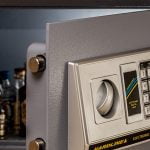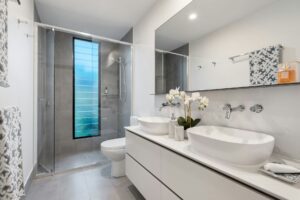One of the challenges you face as an adult is the ever-increasing number of important documents you must keep track of and keep secure. There are the big ones, such as birth certificates and social security cards, but also things like deeds, wills, and insurance policies.
Keeping these documents in a locked filing cabinet might feel like enough, but what if there is a fire in your home? For real security, you need the best fireproof safe you can accommodate. That leaves you with the imposing question of how to choose a fireproof safe.
Keep reading for some tips on choosing fireproof safes for your home.
Fireproof Rating
The first thing you should look for is a UL fireproof rating. These ratings typically take a form similar to the following:
- Class 350 1/2 Hour
- Class 350 1 Hour
- Class 350 2 Hour
The 350 is the internal temperature the safe will maintain when exposed to extreme heat or fire. The time listed is the amount of time the safe will maintain that temperature when exposed to extreme heat.
Most ratings will also include a top temperature, such as 1700 degrees or 2000 degrees. For reference, most homes fires will not exceed approximately 1200 degrees.
Size
Another factor you must consider is the overall size of the safe. If you occupy a small apartment, you want small safes or even a portable safe. One of the benefits of a fireproof safe that is also portable is that you can potentially grab it on your way out of the apartment, assuming it’s convenient and safe to do so.
If you have larger items that need protection, such as firearms, you’ll need a fire-rated gun safe. These are typically large and may weigh hundreds of pounds. Safes of that size are only practical in extremely large apartments or traditional homes.
Waterproofing
Most fireproof safes are also at least temporarily waterproof. This can prove helpful under minor flood conditions, such as a broken pipe, and keep documents safe when firefighters attempt to put out a house fire.
Access
Different types of safes employ different types of locks. Some use a traditional combination, while others might use a keypad, key, or even biometrics. You should pick a lock type that feels most comfortable for you.
Cost
Cost is also something you must consider. The higher the temperature rating and the longer the length of time a safe will maintain an internal temperature, the more it will cost. Additionally, larger safes will typically cost you more than smaller safes.
Picking the Best Fireproof Safe
While there an objectively best fireproof safe might exist, it’s a more subjective decision for most people. The best safe for you is the safe that fits your home, your budget, and your storage needs.
If you live in a small apartment and only need documents secured, a small safe is probably optimal. If you live in a home and want your rifles secured in addition to any documents, you’ll need a much larger safe.
Looking for more tips for your home? Check out the posts in our Home & Real Estate section.









